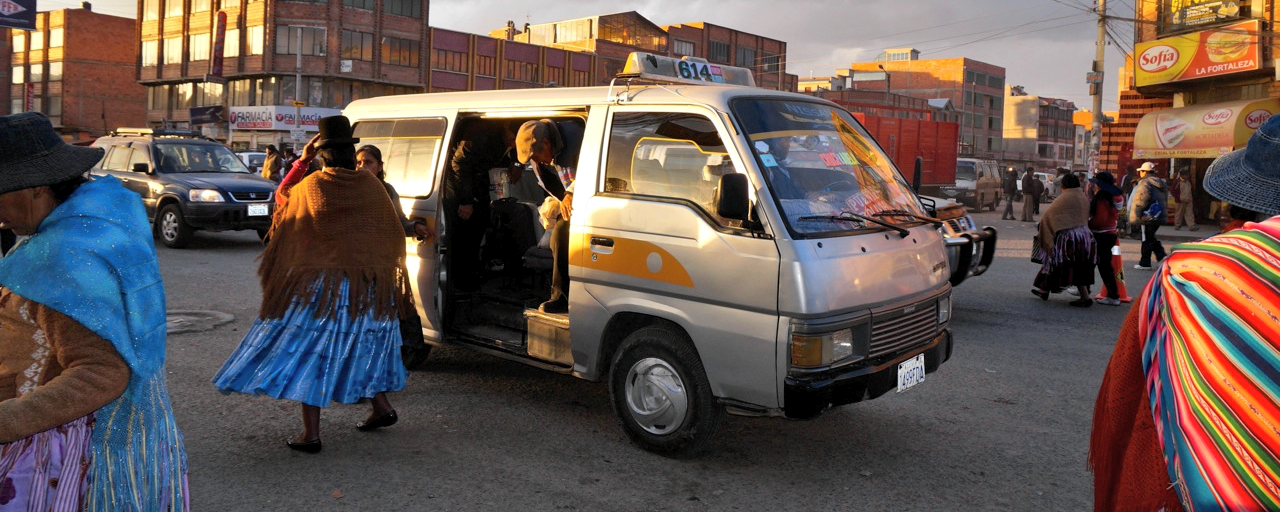
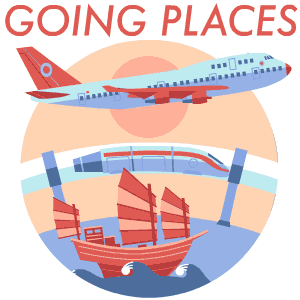
Ask any group of women if they’ve ever felt unsafe on public transportation, and the stories will flow. In Mexico City, 64 percent of women reported having been groped or physically harassed while using public transit. As for New York’s subway system, 63 percent of women surveyed mentioned personal experiences of sexual harassment, while 10 percent reported sexual assault. There are disheartening statistics about women’s transportation safety around the world–it’s a borderless problem.
Unsafe transport not only causes women to change their modes of movement, it also reduces how many trips they make. This insecurity reduces household income, as inadequate transportation limits women from accessing their full educational and employment opportunities. Transit insecurity is damaging to the environment, too, as more privileged women who are afraid to walk, cycle, or take public transportation turn to polluting, private cars and taxis instead.
Of course, women can’t be treated as an undifferentiated group. Disability, class, race, age, sexuality, gender presentation, and other factors mean that not all women are equally vulnerable to crime or violence on public transportation. Men and boys can also be victimized, and it shouldn’t be assumed that every woman is a victim-in-waiting. But women around the world do share certain vulnerabilities as passengers that make it useful to analyze their needs as a group. As UCLA urban planning professor Anastasia Loukaitou-Sideris has written, gender is the single most significant factor explaining transit-based fear and anxiety.

There are solutions, but many are controversial. A key concern when planning transportation safety improvements is making sure not to shift the burden onto vulnerable passengers. “Why should we put the onus on women?” Loukaitou-Sideris asks. Yet many well-intended safety measures do just that.
In the app world, there are private Uber-like services that allow women to choose female drivers. Safr, which is currently invite-only and Boston-based, pledges to pay its female drivers more than the industry standard. However, it faces legal challenges around the potentially discriminatory nature of only hiring women; such challenges have sunk similar apps.
There are also apps in India, Yemen, Lebanon, and other countries that crowdsource data on safe areas, including transport stations. These include Safecity, which collects and maps women’s reports of harassment and violence (its tagline is “Pin the Creeps”).
This problem isn’t just limited to apps. Notoriously, Mexico City has distributed rape whistles to female metro passengers. Overall, systems for reporting assault are time-consuming and onerous, particularly for low-income women who can’t afford to lose time and money visiting police stations.
Another commonly proposed but contentious solution is gender-segregated public transportation. Over a century ago, the Hudson and Manhattan Railroad experimented with women-only cars. Today, Tokyo, Rio de Janeiro, and Dubai are among the cities with women-only train compartments, buses, or taxis.
Port Moresby is another. The capital of Papua New Guinea has a high level of reported gender-based harassment and violence on its transportation services, ranging from verbal harassment to indecent exposure and robbery. “For women, getting on a bus in Port Moresby means an almost guaranteed experience of sexual harassment,” says Lizzette Soria, who manages the UN Women’s Safe Public Transport Programme for women and girls.
Soria adds of the three women-only buses in Port Moresby: “We know that this is just a short-term strategy, because of course our long-term [goal] is to make safer public transport for everyone. Some have suggested that women-only buses address the symptoms and not the problem, however, our first task is to make women and girls safe.” One advantage of Port Moresby’s gender-segregated buses has been their use as safe spaces to share information about women’s rights.
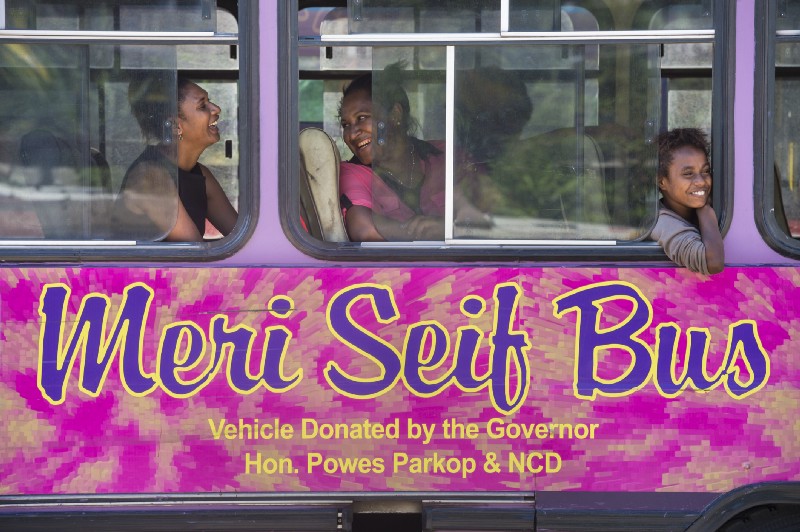
Measures that lead women to alter where and when they travel may be a means to an end, but they’re not nearly enough. It would be dangerous to reinforce the idea, spread by a culture of harassment, that public space isn’t fully women’s to occupy. Gwen Kash, a researcher based at the University of North Carolina at Chapel Hill who specializes in public transit reform in Bolivian and Colombian cities, points out that women-only transportation doesn’t address the needs of transgender or queer passengers who might be especially targeted but not welcomed onto gender-segregated vehicles.

The transportation safety measures that are most effective tend to be the ones favored by women themselves. You’d think this should be obvious, but in Kash’s work with transit planners she’s encountered skepticism that sexual assault on public transport is a problem, and the implication that women even enjoy the attention. Moving from acknowledging women’s experiences to actively soliciting their opinions is another big step.
Men and women often have different preferences for safety measures. One study from the U.K. Department of Transport showed that women preferred more staff on buses, while men favored CCTV. These findings have been replicated in other countries. In general, men tend toward technological solutions, while women feel more reassured by a human presence, in real time. One concern many women express about CCTV is that video-operated surveillance doesn’t help victims of crime at the time the incident is happening.
Along with more staff, women almost universally support one simple solution: lighting. The combination of better lighting and transit personnel, including officers riding on trains, is why leaders of women’s groups in Loukaitou-Sideris’ research gave the metro system in Washington, D.C., high marks for safety. Loukaitou-Sideris also praises Toronto and London for developing their transit policies with both men and women in mind.
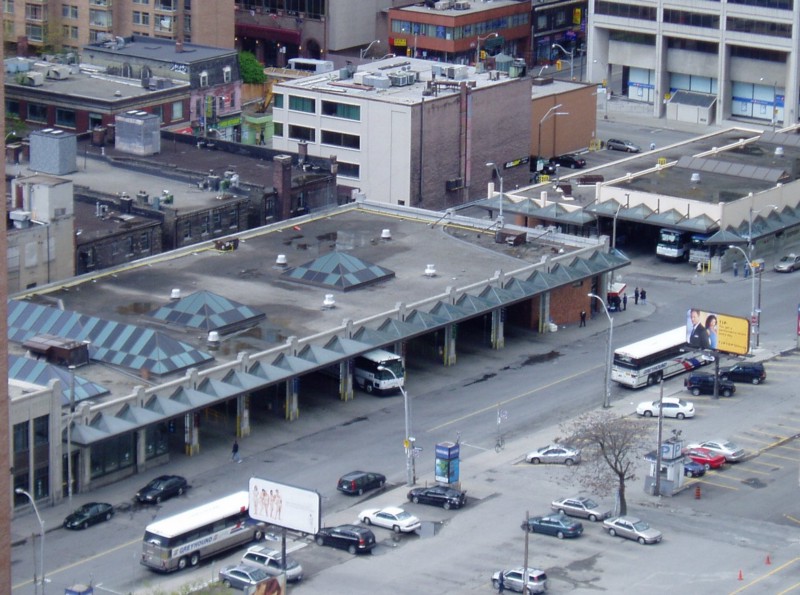
In Canada in 1989, the Metropolitan Toronto Action Committee on Violence Against Women and Children (METRAC) pioneered women’s safety audits, where women walked with transportation planners to pinpoint areas where they felt unsafe. METRAC then pushed for legislative changes based on the findings. These kinds of safety audits have spread all over the world, strengthening relationships among communities, police, and urban planners. Safer Cities Dar es Salaam reported reduced crime levels following the auditing process, while the Safer Nairobi Initiative pointed to women’s increased use of public space.
These examples show, as Loukaitou-Sideris says, that “there needs to be the political will” to drive real change in transport safety. Yes, nonprofits and community movements like METRAC in Toronto, Jagori in Delhi, and Hollaback in London have helped to make women’s transportation needs a matter of public concern. But policymakers and planners must be onboard to make large-scale improvements to transit networks. Worldwide, the legislative, planning, and transport professions remain dominated by men, which can create an invisibility around gendered needs.

Adding to the issue, amassing broad-based political will is tough in cities whose transit systems are stratified. Take Los Angeles, a famously car-centric city. Loukaitou-Sideris notes of gendered harassment on L.A.’s buses: “You don’t see much pressure from the well-to-do areas of the city. This is affecting a subgroup of the city. Often they’re immigrant women “¦ They don’t report it to the police,” she says. Without pressure from politically mobilized and powerful city residents, officials are less likely to take action.

Urban planning scholars like Loukaitou-Sideris promote measures with a firm foundation of environmental design, which looks at how infrastructure and physical factors affect behavior. Lighting that extends from bus stops to the surrounding streets, so people feel safe walking home once they’re off the bus, is an example of that. In Port Moresby, the Safe Public Transport Programme targeted gender-sensitive infrastructure in its campaigning, alongside regulation, planning, and behavior change.
Other campaigns aim at potential harassers, assaulters, and bystanders to avoid perpetuating the idea that women’s travel is the problem. A campaign called “Don’t Touch My Girlfriend” is one (somewhat poorly titled) case from Brussels. Soria says that physical measures are one thing, but “if we don’t change attitudes and beliefs, we will continue to have harassment.”
Then there are relationship-based initiatives, which involve local community groups and perhaps transport personnel. In Port Moresby, young people played key roles in developing and delivering messages around gender equality; also, bus drivers were trained in how to identify sexual harassment and how to address it onboard.
These kinds of driver-focused initiatives aren’t always helpful, especially when transportation is informal and poorly regulated. Kash says that in Bolivian cities, where informal minibuses are common and generally a low-paid livelihood, “it’s to the driver’s advantage not to intervene” in situations of harassment and assault. If they do, they risk lost income and often unwanted confrontation.

In general, however, expanding the ranks of female transportation operators, security officers, and transport planners–and making it more convenient for passengers to report harassment and assault to them–helps to increase the gender sensitivity of transportation.
A key lesson from the Safe Public Transport Programme in Port Moresby has been the role of political leadership. “One of the success factors has been the critical relationship between UN Women and the government,” Soria says. She credits Port Moresby’s governor, who she says has been a strong advocate for combatting gender-based violence. His administration dedicated 2016 to making the city safer for women and girls, and the transport safety program built on that work, as well as an earlier UN Women’s program on safe markets.

Public transport suffers from limited funding. That’s one reason local officials give for embracing technological solutions like CCTV over expensive, more popular steps like increased staffing. Yet not all solutions that women favor need to be costly. Panic buttons on buses, trialed in New Delhi, are one example. Another is personal request stops, offered in Toronto and Montreal, where people are allowed to exit buses at places other than designated stops.
There are also ways to optimize the use of available funds. Loukaitou-Sideris’s research in L.A. has shown that a small proportion of bus stops are hotspots for gender-based crime. Focusing attention on these areas, she says, would be a cost-effective way of targeting resources.
Plus, the limited-funding argument has its weaknesses. The growth in security measures following high-profile cases of transportation-based terrorism shows that where the political will exists to prioritize safety, funds can be accessed. Yes, major terror incidents are dramatic and traumatic. But they’re also rare. Incidents of harassment and assault on transport are not.
“Safe transit for women is good for everybody,” Kash says. More frequent services reduce the overcrowding that facilitates groping; and less crowding, would be very popular among female and male users of the frequently packed buses in Bogotá, she adds. More information about bus and train times allows passengers to more efficiently plan their trips–and women report that reduced waiting times and greater certainty about transport options make them feel safer.
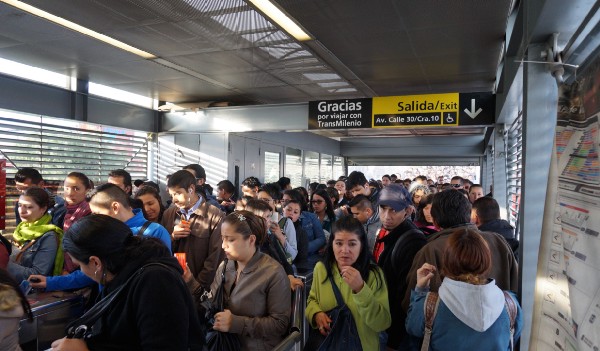
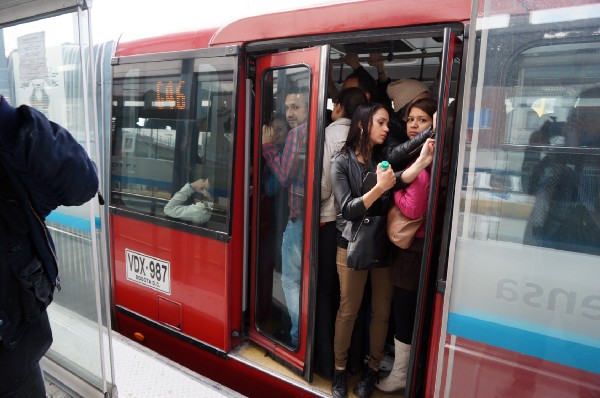

There’s no magic checklist for reducing gendered transit fear, but there are commonalities in the best solutions. Have a variety of women identify their own transportation safety needs and preferred solutions. Make sure groups such as disabled or older women aren’t inadvertently excluded. Get leaders onboard. Make transport professions more gender-balanced. Don’t default to cheaper solutions like CCTV. Respect the power of human presence. Avoid placing financial burdens on low-income women who may need to prioritize other basic needs over their own safety. Remember that buses remain crucial to poorer women, all around the world. Use technology thoughtfully in conjunction with other measures.
Ultimately, though, the most important thing a transport planner can do to improve safety for women is to listen to women and girls. Asking them about their transportation needs and preferences is surprisingly rare–Loukaitou-Sideris refers to this as the “gender gap in mobility.” This neglect can lead to implementing solutions that officials think women want, like attention to safety on buses, when conversations with female passengers might reveal more concern about safety while waiting for buses.
So, first, last, and always: Just talk to women. This isn’t earth-shattering advice. But for women to feel more self-sufficient, and freer to move around their own cities, it’s the only option.


How We Get To Next was a magazine that explored the future of science, technology, and culture from 2014 to 2019. This article is part of our Going Places section, which looks at the impact of transportation technology on the modern world. Click the logo to read more.
